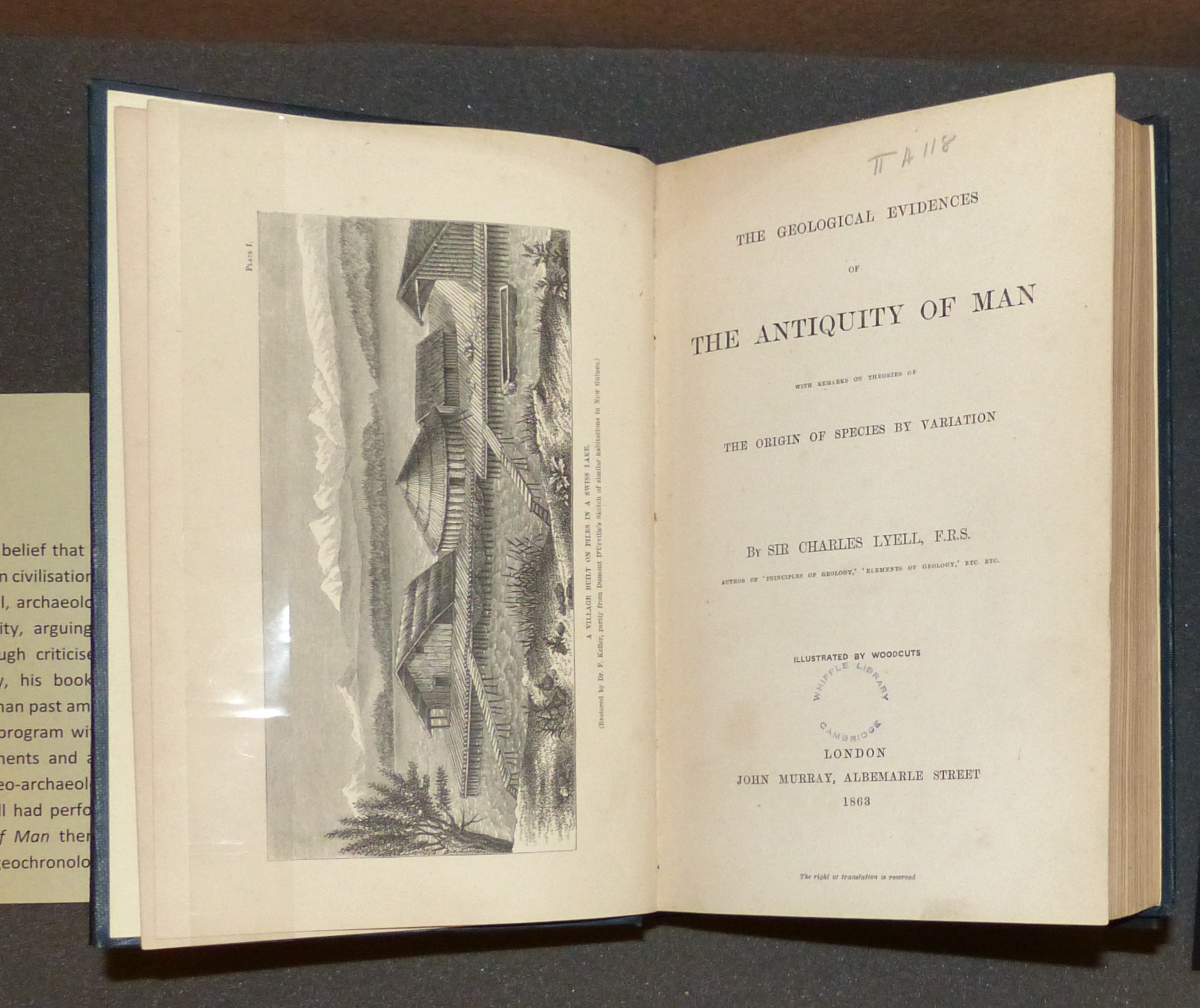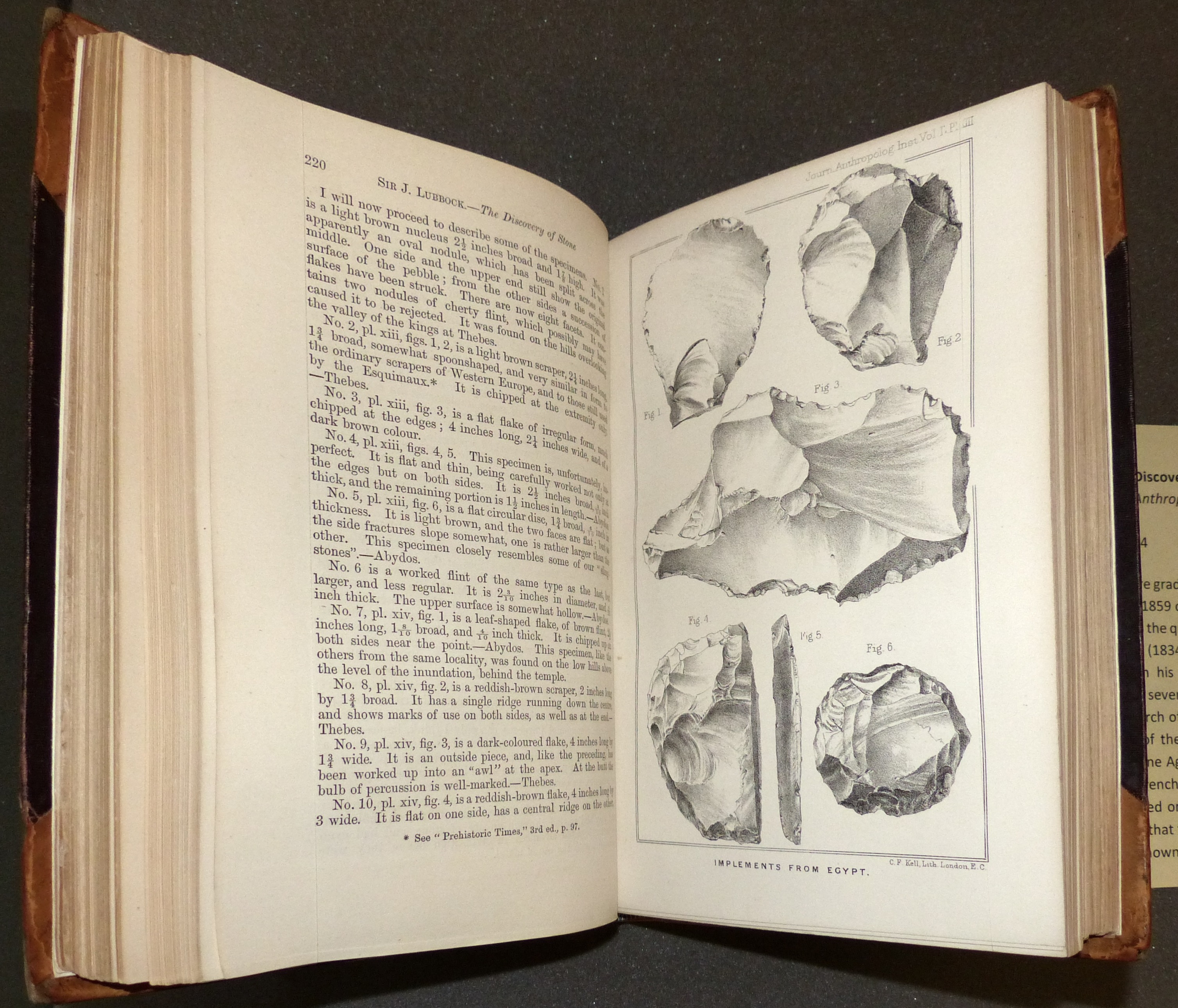
Geologist Charles Lyell (1797-1875) shared the common belief that Egypt contained some of the earliest material evidence for human civilisation. This best-selling book summarised the most recent geological, archaeological, ethnological, and linguistic research on human antiquity, arguing that humans were approximately 100,000 years old. Although criticised by fellow gentlemanly-scientists for its lack of originality, his book was nonetheless key for popularising the idea of a remote human past amongst wider Victorian audiences. Lyell also shared a research program with his father-in-law Leonard Horner to measure alluvial sediments and assign dates to the most recent geological period. Horner’s geo-archaeological investigations in Egypt actually built on excavations Lyell had performed along the Mississippi River in 1846. Lyell’s Antiquity of Man therefore offered the best geological defense of Horner’s Egyptian geochronology.

Stone tools were gradually accepted as credible evidence for remote human antiquity from 1859 onwards. While many Victorians defended a European Paleolithic Age, the question of an Egyptian Stone Age was far more divisive. John Lubbock (1834-1913) famously coined the terms ’Neolithic’ and ‘Palaeolithic’ in his influential book Pre-historic Times (1865). He then became one of several ‘flint-hunters’ in the 1870s and 1880s who travelled to Egypt in search of physical evidence. Lubbock recovered flint hand-axes in the Valley of the Kings with which he proposed there was an ‘ante-Pharaonic’ Stone Age. The Victorian flint-hunters debated their finds with German and French Egyptologists who insisted the stone tools were either naturally formed or dated to much later dynastic periods. Even for those who accepted that the Egyptian flint tools were prehistoric, their exact age remained unknown.
